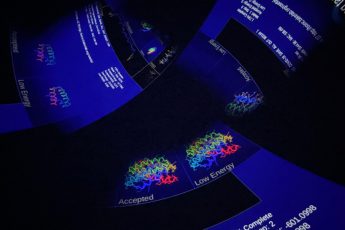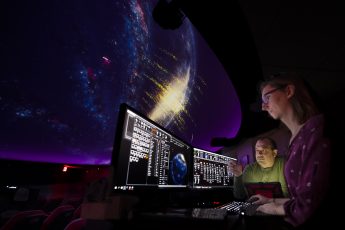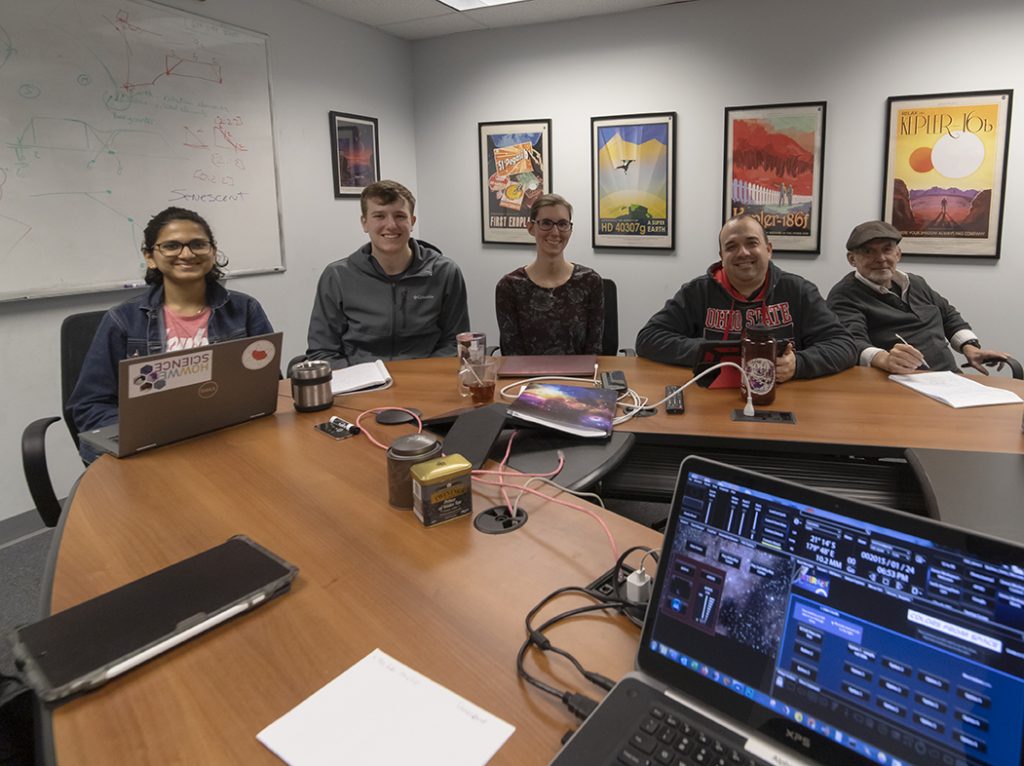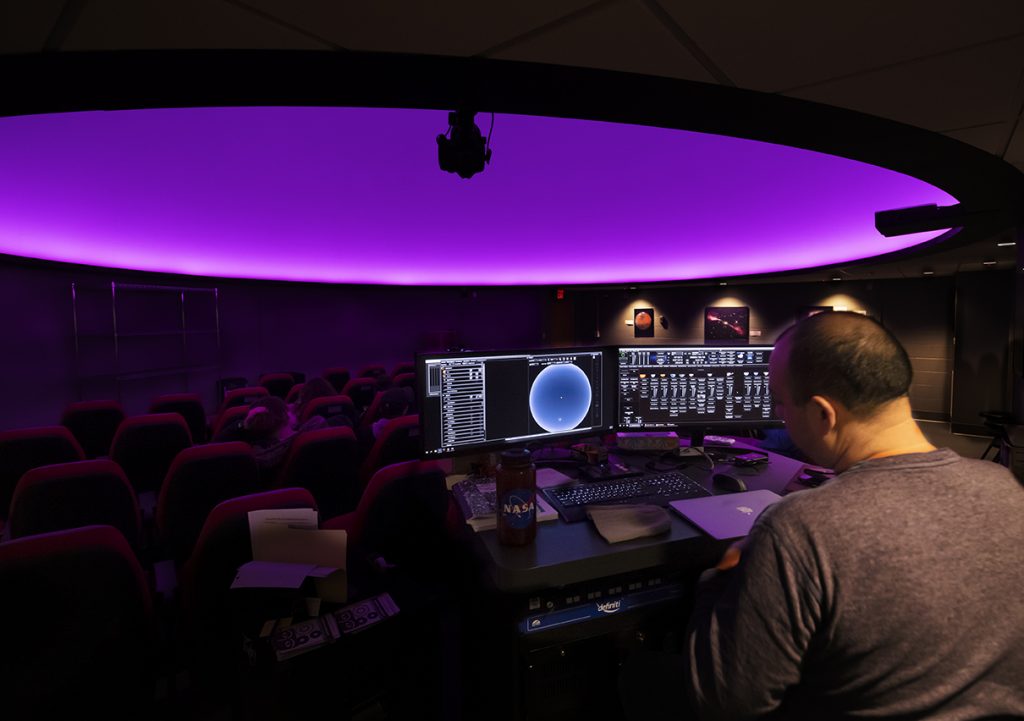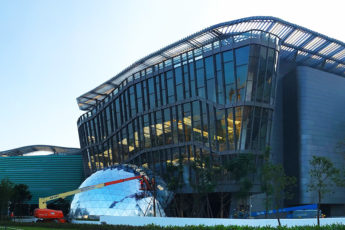Season’s Greetings to everyone! I can’t believe we are already at the end of 2021. Don’t we all feel that somehow, we have a year and a half hole in our lives? On the positive side we are returning to live meetings and getting to hug and shake hands with colleagues again. Let’s hope that by March, we can talk about Corona in the past tense.
In recent conversations with customers the term “accessibility” is becoming more and more of a theme. The most common type of accessibility measures used in planetariums the past years have been architectural features like ramps and handicapped seating. But specifically for the hearing disabled, there are a number of technologies in use.
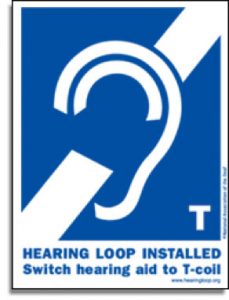 You may have seen this sign in various shops or theaters. You can find out more about the origin and use of this sign here: http://www.hearingloop.org/logo.htm
You may have seen this sign in various shops or theaters. You can find out more about the origin and use of this sign here: http://www.hearingloop.org/logo.htm
When you see this sign, it means that an inductive loop or “T-Coil” is available with audio that is compatible with hearing aids that support the function. It also serves as good PR for the facility that has made this service available. Unlike other portable headphone or other listening devices, the T-Coil works with a person’s own hearing assistance device, which is often tuned and setup specifically for the individual. Also, one does not need to borrow or remember to return a borrowed device.
So how do they work? Let’s focus here on theaters like planetariums, and how this technology is implemented in such venues. The simple explanation is that a “loop” is installed around the perimeter of the theater. The loop is simply a copper wire, or tape, and an electrical current is passed through this loop which generates a magnetic field which is modulated by the audio program. Usually, the audio is just a narration, or spoken commentary in order to avoid complex audio signals like music, which can cause audio confusion with many suffering hearing disabilities.
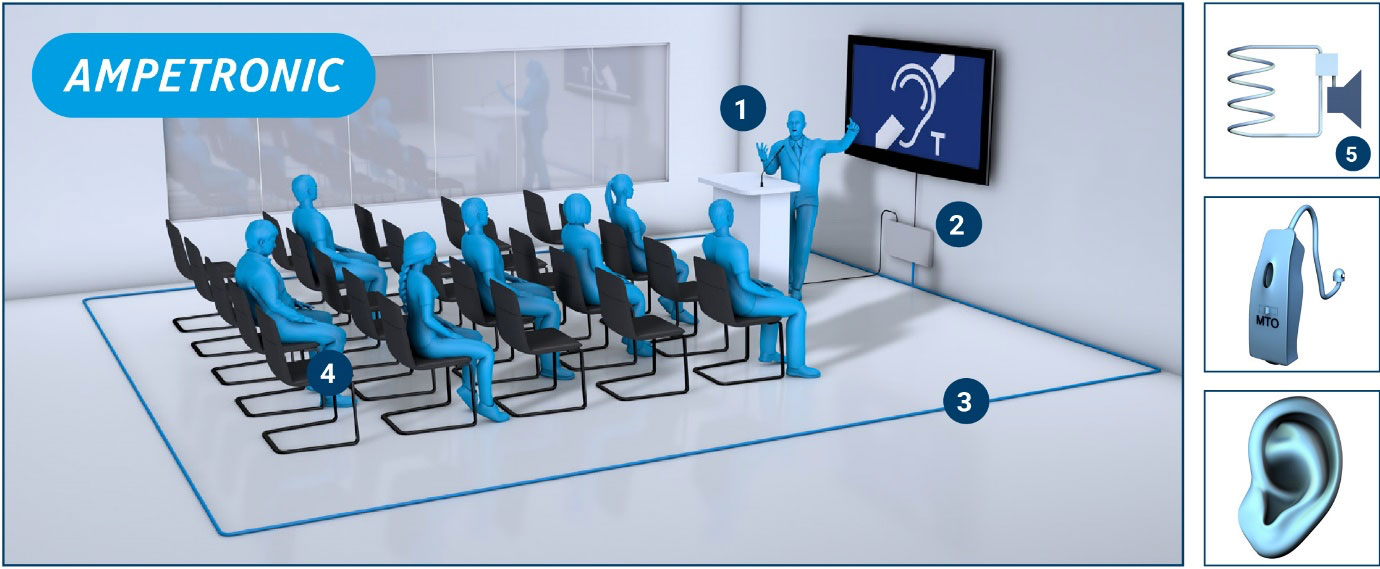
Here is a simplified illustration of a hearing loop system in operation. Those having a hearing aid that support the T-Coil function, simply need to be within the loop and they can receive the broadcasted audio program. The T-Coil is like a mini-antenna, and it converts the magnetic signal into a small electrical signal with the audio information that then fed to the hearing device. For those not having a hearing aid with T-Coil function, there are wearable accessories like headphones with an inductive receiver, that most venues supporting this technology have available to loan. Hearing Loops are actually mandated by law in many countries, especially in new construction that is for the public.
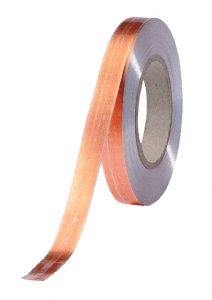 The loop itself is often installed as a copper tape and put under the carpeting if the floor is available before carpeting is completed. Sometimes in a round room, a flat tape is a bit difficult to lay and in such cases one can also use a suitable gage copper wire. I’ve often tucked a copper wire at the junction between floor and wall, just tucking the wire under the carpet edge and using hot glue at various intervals to ensure it stays put.
The loop itself is often installed as a copper tape and put under the carpeting if the floor is available before carpeting is completed. Sometimes in a round room, a flat tape is a bit difficult to lay and in such cases one can also use a suitable gage copper wire. I’ve often tucked a copper wire at the junction between floor and wall, just tucking the wire under the carpet edge and using hot glue at various intervals to ensure it stays put.
As the signal being generated is magnetic, there can of course be complications. If there is a lot of metal in the floor construction or theater walls, this can interfere with the signal and cause drop out. Often it is useful to make some tests by simply laying the wire on the floor around the theater and testing operation. I haven’t experienced any interference from projection domes, and I would expect that the newer aluminum domes don’t cause as much interference as they are non-ferrous.
It’s possible to run the loop also around the theater wall, at about head-height. Many theaters with coves have a fascia or other architectural element at an elevated height that might provide an easy place to tuck a wire behind. You can even have 2 loops in parallel. One on the floor and one at head level in order to increase strength. While installation is easy and the materials are not so expensive, its best to leave the supply and installation to professionals with sufficient experience. The cables feeding the loops need special attention, and there are dozens of factors that effect performance than only a seasoned professional can evaluate and make the right choices.
Feeding the loop are special amplifiers that work by generating a current in the copper loop, thus creating the magnetic field. The amplifiers used to be a pure analog technology but the newer models on the market now accept digital audio and there are even Dante networked audio models now available. The amplifiers must be selected based on the length and characteristics of the copper loop. Again, it’s best to work together with a professional to ensure the best solution.
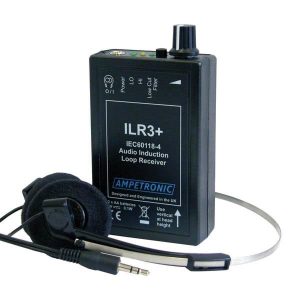 If you have an inductive loop system it is good to keep a headphone or other testing device at the console so that you can make regular checks that everything is ok and functional. The worst is to advertise that you support such devices, and then deliver a poor or disappointing experience to your visitors.
If you have an inductive loop system it is good to keep a headphone or other testing device at the console so that you can make regular checks that everything is ok and functional. The worst is to advertise that you support such devices, and then deliver a poor or disappointing experience to your visitors.
If because of architecture or other restrictive situations you are completely unable to install an inductive loop system, there are other possibilities. Infra-red (IR) and radio frequency (RF) transmitters can provide suitable coverage and performance for listening devices. Newer systems are emerging now that work via Wi-Fi, and allow visitors to use their own tablets or smartphones to receive broadcast audio. I haven’t any experience with these up to now, but I’ll report back later if I find something interesting.
These alternatives are really not a substitute for a proper inductive loop and if legally mandated you will need to find a solution. However, any efforts to accommodate visitors with special needs will certainly be appreciated by those visitors.
Please feel free to respond with any comments by writing to the editor. I think that feedback regarding any of the various articles and columns in The Planetarian would be welcome. Especially if you are sharing your own experiences or helpful tips.
Images used by permission from Ampetronic Ltd. www.ampetronic.com
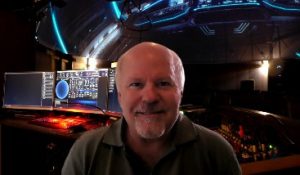
Glenn Smith
General Manager
Sky-Skan Europe
Munich Germany
smith@skyskan.com


